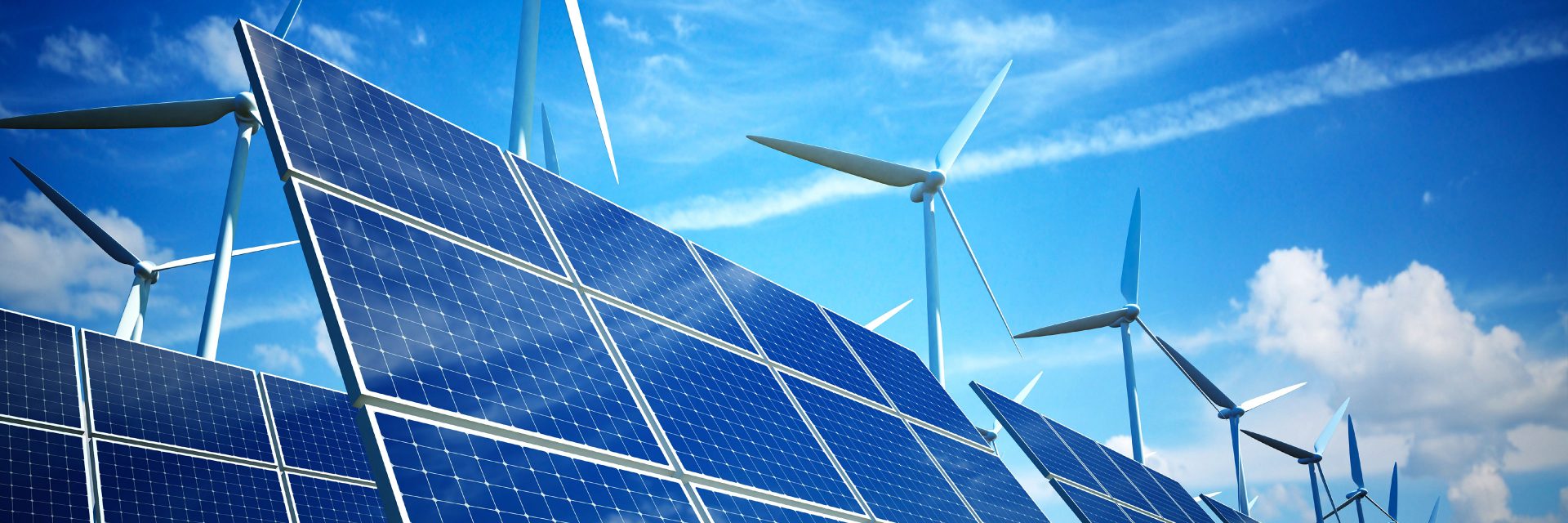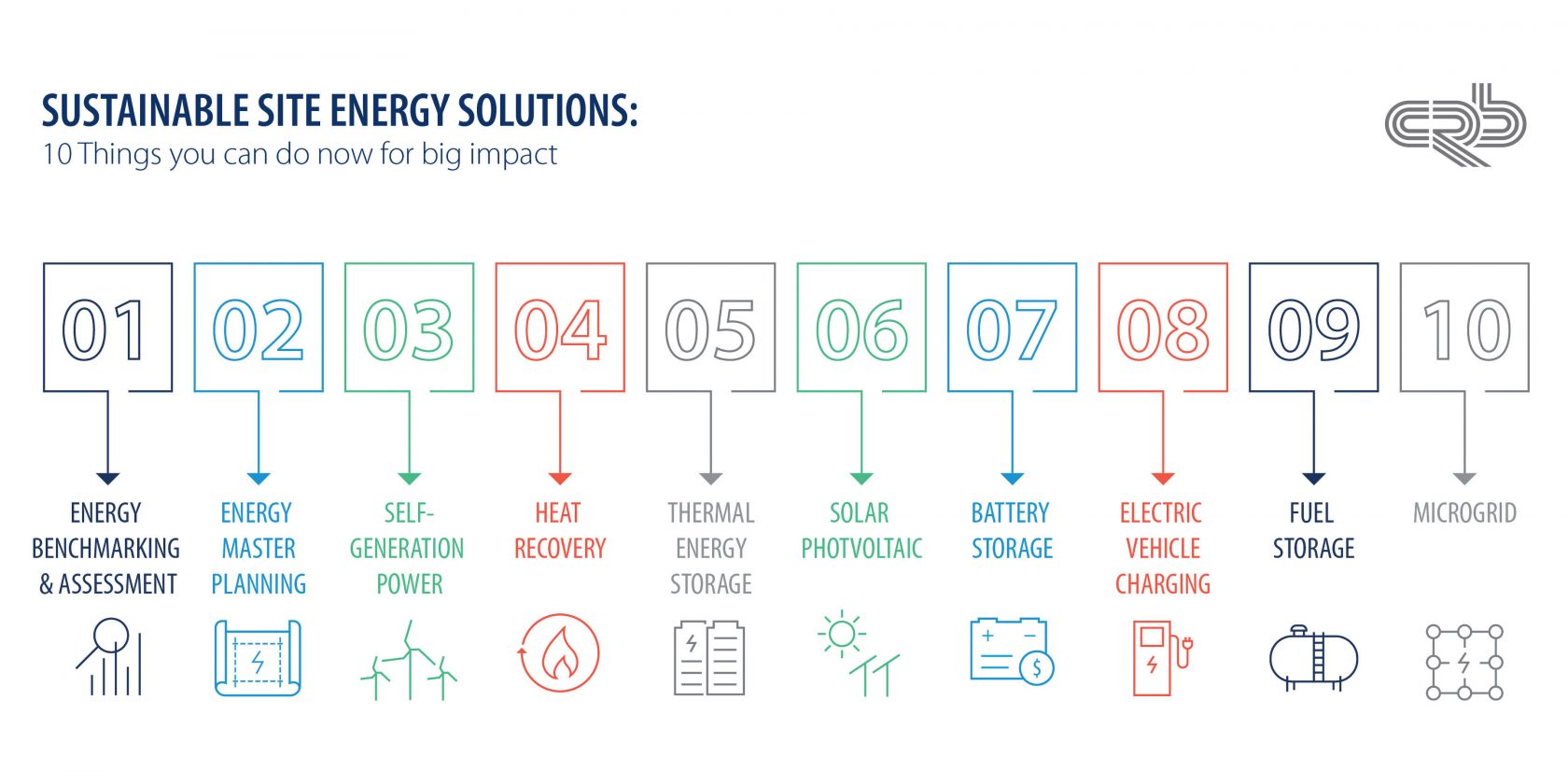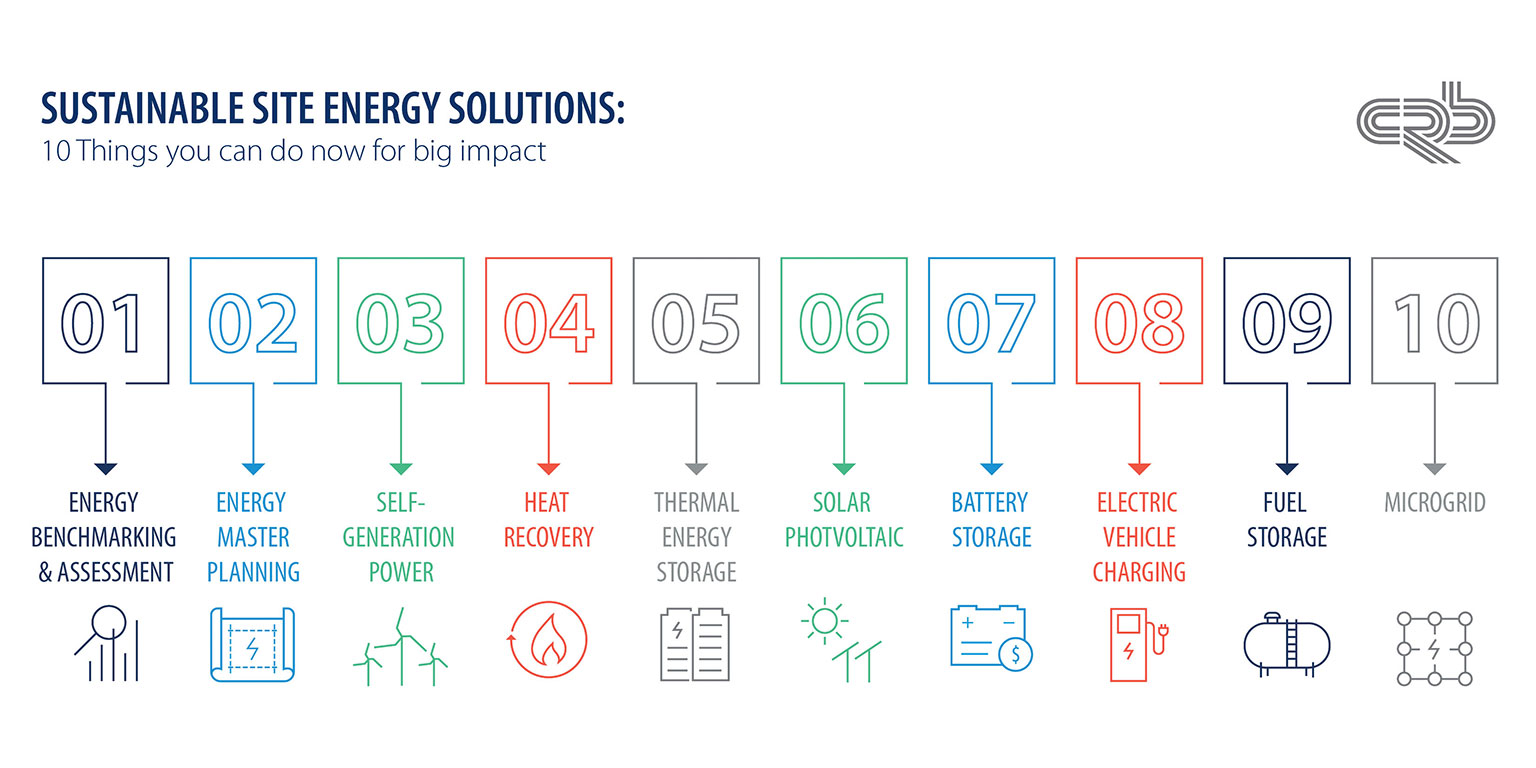
While sustainable energy solutions are not a new thing, their economical payback has improved considerably with increased technological strides and available incentives.
Advanced technology clients are increasingly interested in three major site components:
- Increase site utility resiliency/reliability/redundancy
- Lower carbon footprint
- Improve the bottom line
Even in the most energy-intensive industries, companies are finding significant sustainable energy wins, like a fully-electric biotech manufacturing facility. Here are 10 sustainable energy solutions you can implement at your site today or plan for tomorrow.


1. Energy benchmarking and assessment
You can’t improve upon what you can’t measure! Knowing where you stand is the first step to evaluating your energy approach. A building assessment (also known as an audit) of various levels can provide insight into simple low-hanging fruit before you even begin to consider spending.
Some utility companies will provide no-cost or low-cost energy audits for most commercial systems. CRB has the expertise to coordinate this effort and provide a review of energy-intensive processes as they relate to industry codes, standards and regulations.
2. Energy master planning
We are in constant reaction to the world around us. Creating an energy master plan to be proactive in our energy consumption will save headaches and capital expenses in the future. Plan the work, work the plan and adjust as necessary. Don’t forget to include waste, water and refrigerant management!
Couple energy master planning with an architectural-led strategic facility plan for improved space utilization, lab optimization, gap analysis, growth strategies and budget and schedule development. Space planning for future build-out is a low or no-cost offering that provides value for future implementation.
3. Self-generation power
Depending on your locale in the United States, the grid has levels of reliability. The U.S. grid as a whole is aging significantly, and weather patterns have made the grid less reliable in recent years. Providing on-site self-generation power improves site resiliency. Current technologies generally include engines, gas or steam turbines and fuel cells.
The estimated costs of power-related outages has increased over the last few decades—in part from an aging infrastructure, an increase of severe weather patterns and an increase of cost-related downtime.
4. Heat recovery
By capturing any waste heat associated with self-generation power, the overall system efficiency greatly improves, lowering your carbon footprint and improving your bottom line.
A utility generation system is approximately 35 percent efficient. Creating on-site power and utilizing the waste heat can drive combined efficiencies upwards of 70 percent.
5. Thermal energy storage
Whether hydronic, ice or phase-change material, a thermal energy storage system further increases resiliency, can provide levels of redundancy and further improves operating costs.
Hydronic capacity is approximately 100-gallons per ton-hour, therefore a 1.2 million gallon hydronic thermal energy storage tank would provide about 500 refrigeration tons for 24 hours.
6. Solar photovoltaic
Since 2012, the solar photovoltaic industry has skyrocketed and is likely to continue. We differentiate between solar photovoltaic and solar thermal (generation of heat). Generally, the real estate is better served with solar photovoltaic; however, it is quite possible these technologies will combine in the near future. Plan accordingly.
The cost of creating power from solar photovoltaic is comparable to the cost of purchased electricity, making solar power an easy decision in many installations.
7. Battery storage
Battery storage helps protect the end user from utility rate changes and allows them to maximize the time of day when batteries are charged (whether by self-generating power or from the grid during times of lowest costs) and discharge when the utility rates are greatest.
California, among other states, has mandated public utilities to provide over 1,500 megawatts of storage capacity by the year 2024 to help reach their goal of obtaining 50 percent of electricity from renewable energy by the year 2030. California is already near a surplus of energy production during certain times of the year such as fall and spring when demand tends to be low.
8. Electric vehicle charging
As we progress toward a world of electrification, your employees will start to have certain expectations. In an ever-competitive market, providing electric vehicle charge stations is a low-cost installation that your employees will come to expect.
Current grid-to-vehicle charge stations are common; however, emerging technology includes vehicle-to-grid stations where customers can both buy and sell power throughout the day as time-of-use rates fluctuate.
9. Fuel storage
Most self-generation power technologies of today will operate off a natural gas line. Whether distributed generation biogas is provided off-site, customers consistently raise the what-if question of what happens if you were to lose the utility “grid” inclusive of the pipeline? While the United States’ natural gas lines are considered significantly more reliable, providing additional on-site storage in the form of a liquid propane tank will provide the same level of standby power as a diesel fuel tank serving a standard diesel generator.
Propane has about 2.5 times more energy per volume as compared to natural gas, and many technologies can operate as “dual-fuel,” meaning they can continue operations if natural gas supply was cut and on-site propane is available.
10. Microgrid
As our sources of power generation multiply, it is important to know when to charge or discharge energy. A site-level microgrid can also disconnect to “island mode” when the utility power is not available. It is important to choose the right microgrid controller for your specific needs.
According to the U.S. Energy Information Administration, the microgrid market is expected to grow worldwide to approximately $40 billion (or 400%) by the year 2020. In 2018 the market was approximately $12 million.
These sustainable energy solutions are proven technologies, and many industry leaders are already heavily engaged with their own implementations. If you are interested in increasing your site utility resiliency, reliability and redundancy, lowering your carbon footprint and/or improving your bottom line, our sustainability experts are ready to help.


